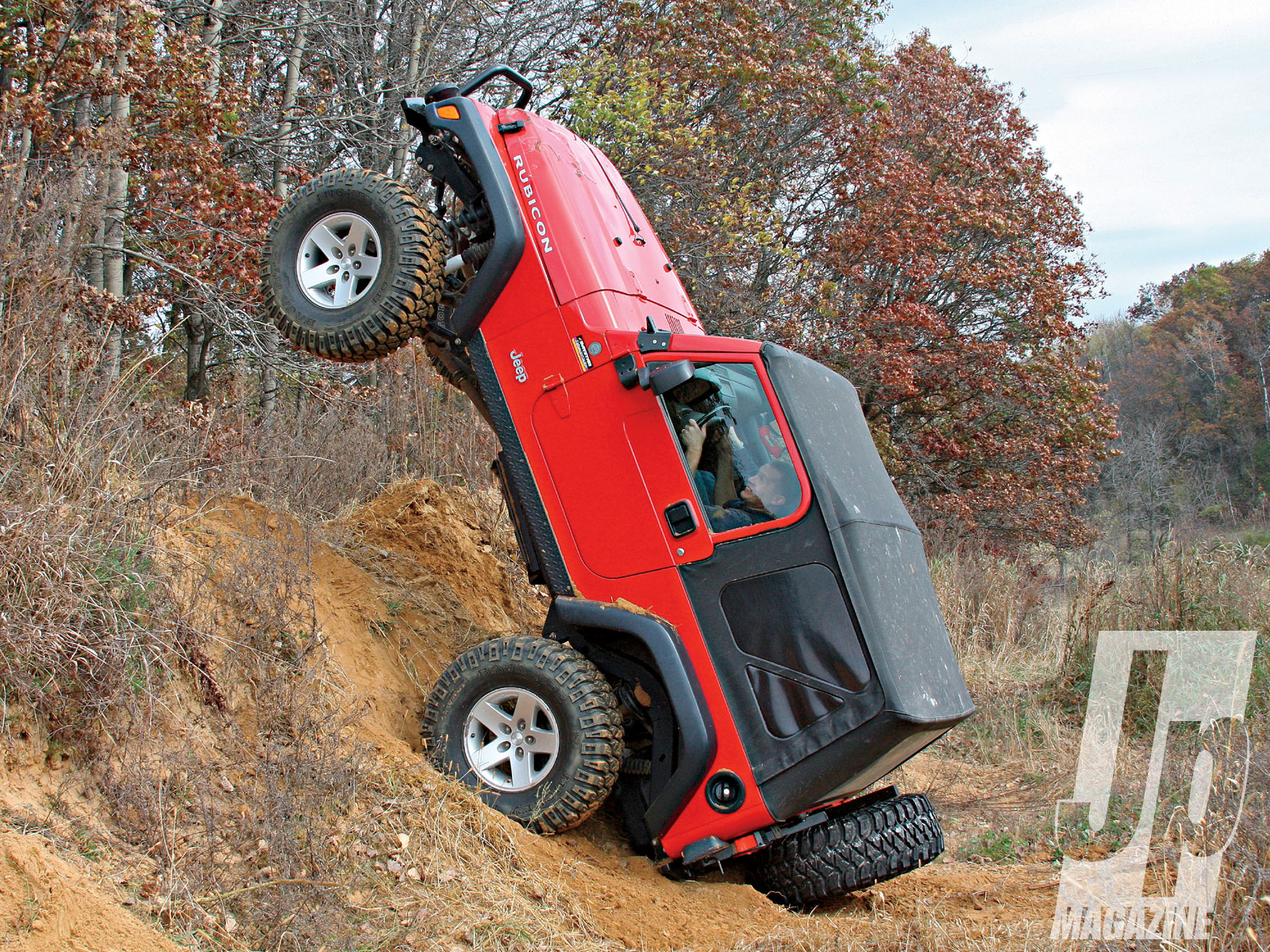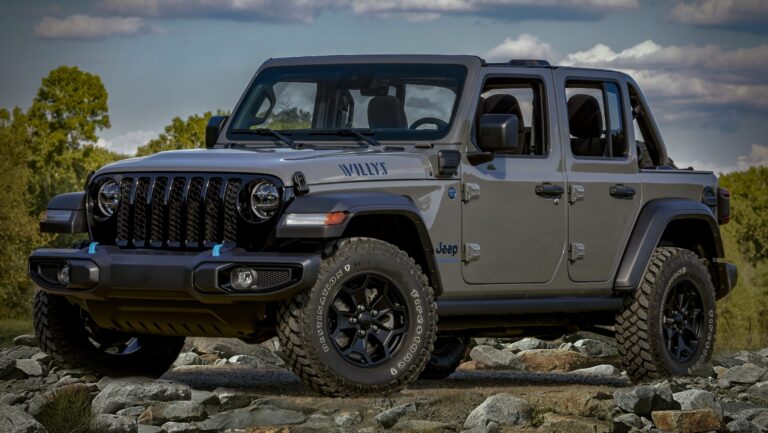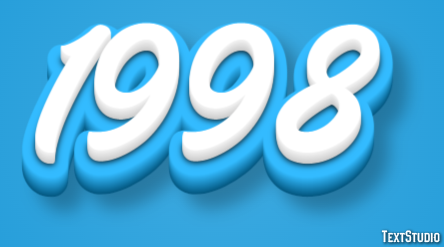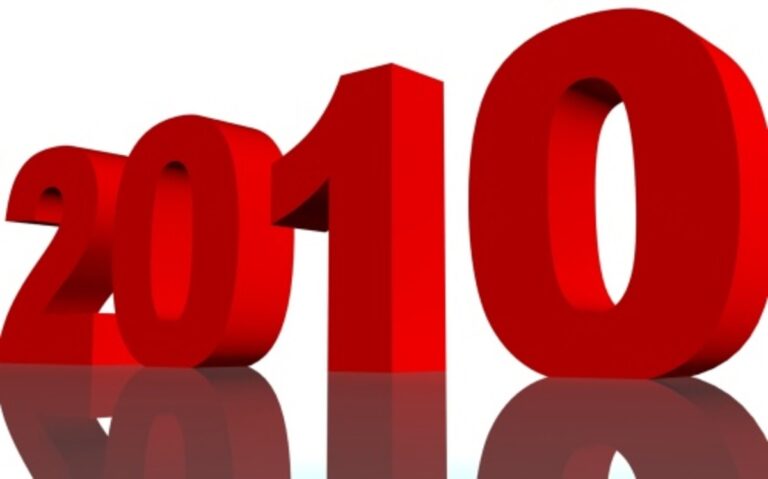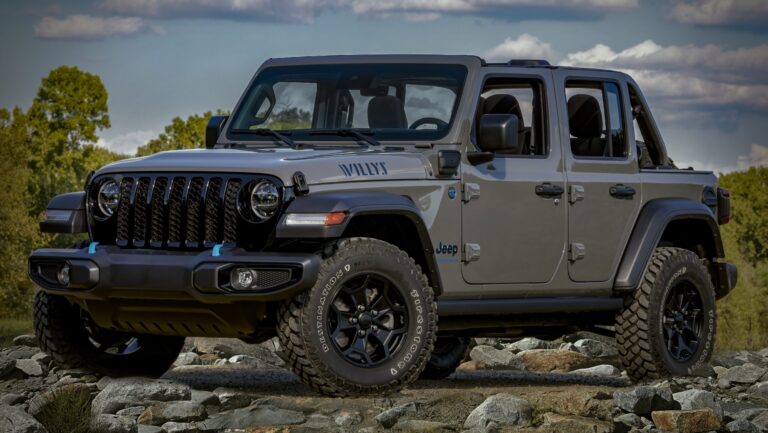Used Jeep Wrangler TJ Parts For Sale: Keeping the Legend Alive on a Budget
Used Jeep Wrangler TJ Parts For Sale: Keeping the Legend Alive on a Budget jeeps.truckstrend.com
The Jeep Wrangler TJ (1997-2006) holds a special place in the hearts of off-road enthusiasts and casual drivers alike. Known for its rugged simplicity, coil-spring suspension that vastly improved ride quality over its YJ predecessor, and the legendary 4.0L inline-six engine, the TJ remains a highly sought-after vehicle. However, as these iconic Jeeps age, the need for replacement parts becomes inevitable. New OEM parts can be expensive, and even new aftermarket options can stretch a budget. This is where the vibrant market for used Jeep Wrangler TJ parts comes into play, offering a cost-effective, sustainable, and often essential solution for maintaining, repairing, and customizing these beloved vehicles.
Buying used TJ parts isn’t just about saving money; it’s about tapping into a robust community, finding rare or discontinued components, and embracing the "Jeep thing" ethos of resourcefulness and DIY spirit. Whether you’re tackling a full restoration, fixing a trail-broken component, or upgrading your rig, understanding the landscape of used TJ parts is crucial for any owner. This comprehensive guide will navigate you through the benefits, types, sourcing strategies, and crucial considerations when venturing into the world of pre-owned Jeep Wrangler TJ components.
Used Jeep Wrangler TJ Parts For Sale: Keeping the Legend Alive on a Budget
Why Buy Used TJ Parts? Benefits and Advantages
The decision to opt for used parts over new ones is often driven by practical considerations, but it also offers several distinct advantages for TJ owners:
- Significant Cost Savings: This is arguably the most compelling reason. Used parts can often be acquired for a fraction of the cost of new OEM (Original Equipment Manufacturer) or even aftermarket equivalents. This makes repairs more affordable and allows for more ambitious customization projects within a given budget.
- Availability of Discontinued or Rare Parts: As vehicles age, manufacturers often discontinue production of certain components. For a TJ, finding a specific trim piece, a less common axle assembly, or an older generation hardtop in good condition might be impossible new, but readily available in the used market.
- Sustainability and Environmental Impact: Buying used parts is a form of recycling. It reduces waste, conserves resources needed for new manufacturing, and lowers the carbon footprint associated with producing new components. It’s an environmentally conscious choice for your repair or build.
- Originality and Patina: For restoration projects, finding a used part with the right amount of wear and "patina" can be crucial for maintaining the vehicle’s authentic look and feel, especially for interior or exterior trim pieces where a brand-new part might stand out.
- Trial and Error for Customization: For those experimenting with modifications, used parts offer a low-risk way to test fitment or functionality before investing in expensive new components. If a modification doesn’t work out, the financial loss is minimized.
- Community and Knowledge Sharing: The used parts market often thrives within passionate communities (online forums, local clubs). These communities offer not just parts but also invaluable advice, installation tips, and shared experiences that new parts vendors can’t provide.
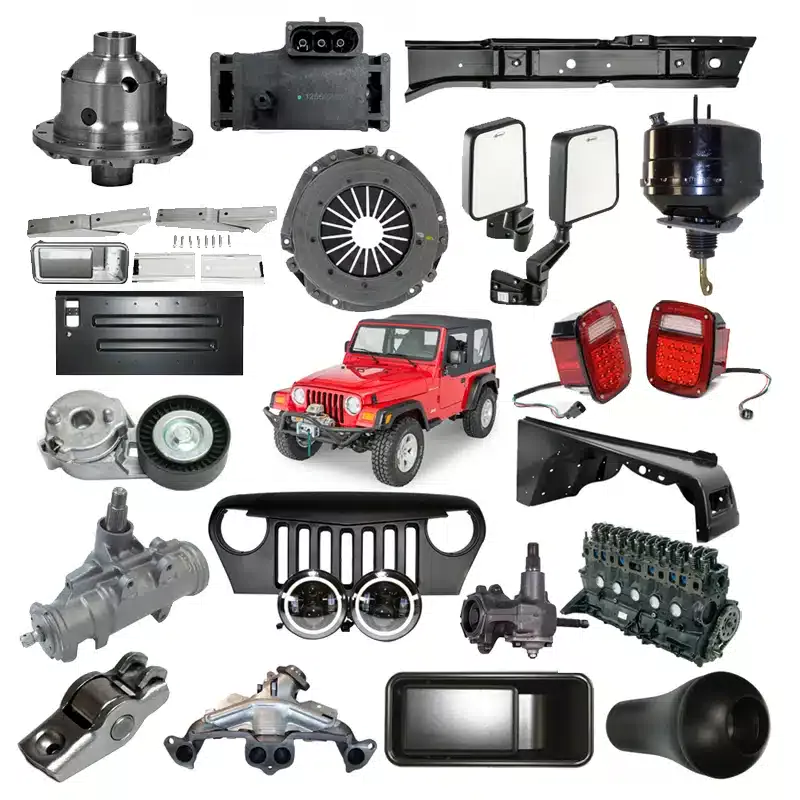
Commonly Sought-After Used TJ Parts Categories
The array of used parts available for the Jeep Wrangler TJ is vast, covering nearly every component of the vehicle. Understanding the most common categories can help narrow your search:
- Body & Exterior Components: This category is always in high demand due to rust, trail damage, or aesthetic upgrades.
- Hardtops & Soft Tops: Full hardtops are particularly sought after for weather protection and security, often fetching premium prices. Soft tops (frames and skins) are also common.
- Doors: Full doors (with glass and inner mechanisms) and half doors are popular, especially for those looking to swap between seasons or replace damaged ones.
- Fenders & Hoods: Prone to trail damage and rust, replacement fenders and hoods are frequently bought used.
- Grilles & Tailgates: Often replaced due to damage or to achieve a specific look.
- Bumpers: Stock bumpers are often replaced with aftermarket units, making the stock ones available, or owners may seek used aftermarket bumpers for a discount.

- Interior Components: Wear and tear, sun exposure, and spills take their toll on interiors.
- Seats: Front and rear seats, especially those in good condition, are popular for replacement or upgrades.
- Center Consoles & Dash Components: Cupholder lids, armrest covers, entire dashboard assemblies (less common but available) are frequently needed.
- Gauges & Switches: Individual gauges, switch panels, or HVAC controls.
- Drivetrain & Axles: Critical for off-road performance and durability.
- Axle Assemblies: Dana 30 front axles, Dana 35 rear axles, and especially the highly coveted Dana 44 rear axles (found in Rubicons and some Sport/Sahara models) are hot commodities. Buyers often look for specific gear ratios or condition.
- Transfer Cases: The NP231 transfer case is standard in most TJs and is robust, but units can wear out or be needed for swaps.
- Transmissions: Both manual (AX-5, AX-15, NV3550, NSG370) and automatic (32RH, 42RLE) transmissions can be found used, though their condition is paramount.
- Driveshafts: Front and rear driveshafts, especially for lifted TJs requiring longer units.
- Suspension & Steering: Components that endure heavy abuse.
- Control Arms: Both upper and lower, factory and aftermarket. Bushing condition is key.
- Steering Boxes & Linkage: Essential for precise steering, these can wear out or be damaged.
- Track Bars & Sway Bars: Often replaced or upgraded, making stock units available.
- Engine & Electrical: While less common to buy complete used engines, individual components are often sought.
- Alternators, Starters, Power Steering Pumps: Common wear items.
- ECUs/PCMs: Engine control units are specific to year/engine/transmission and can be hard to find new.
- Wiring Harnesses & Sensors: For specific repairs.
Where to Find Used TJ Parts: Sourcing Strategies
Finding the right used part requires a multi-pronged approach. Here are the most effective sourcing channels:
- Online Marketplaces & Classifieds:
- Facebook Marketplace/Groups: This is arguably the most active and user-friendly platform. Search for "Jeep TJ parts" or join dedicated "Jeep Wrangler TJ Parts for Sale" or "Jeep Parts Classifieds" groups. Many sales are local pickup only, but shipping can often be arranged.
- Craigslist: Excellent for local deals, especially for larger items like hardtops, doors, or axle assemblies, where shipping is impractical. Search in your local area and surrounding regions.
- eBay: Good for smaller, shippable items. eBay offers buyer protection, which is a plus. Be sure to check seller ratings and detailed descriptions.
- Dedicated Jeep Forums (e.g., JeepForum.com, WranglerForum.com): Many forums have classifieds sections where members buy, sell, and trade parts. This often comes with the added benefit of community trust and shared knowledge.
- Local Sources:
- Junkyards/Salvage Yards: Visit local auto recyclers, especially those that specialize in Jeeps or 4x4s. You can often pull parts yourself, which can save money, but inspect carefully.
- Local Jeep Clubs: Join a local Jeep club. Members often have spare parts, or know who does, and are usually willing to help out fellow enthusiasts.
- Word-of-Mouth: Let friends and fellow Jeepers know what you’re looking for. The Jeep community is strong!
- Specialized Used Parts Dealers: Some businesses focus solely on dismantling Jeeps and selling used parts. They often have a larger inventory and may offer some form of warranty or guarantee, though prices might be slightly higher than private sellers.
- Off-Road Events & Swap Meets: Larger off-road expos and regional swap meets are fantastic places to find unique parts, meet sellers face-to-face, and often negotiate deals.
Tips for Buying Used TJ Parts: What to Look For & How to Inspect
Buying used parts comes with inherent risks, but careful inspection and due diligence can mitigate most of them.
- Thorough Visual Inspection:
- Rust: This is the TJ’s Achilles’ heel. Inspect all metal components meticulously for rust, especially on body panels, frames, and mounting points. Surface rust can be addressed, but deep, flaky, or structural rust is a red flag.
- Cracks & Dents: Check for cracks on plastic components (dash, interior trim) and dents/bends on metal parts (fenders, bumpers, control arms).
- Wear & Tear: For parts with moving components (bushings, bearings, seals), look for excessive play, cracks in rubber, or fluid leaks. Assume that bushings and seals will likely need replacement and factor that cost into your budget.
- Electrical Connectors: Ensure electrical connectors are intact and free of corrosion.
- Verify Compatibility: The TJ had minor variations across its production years (1997-2006).
- Part Numbers: If possible, cross-reference part numbers.
- Year/Model Specifics: Confirm the part is from a compatible year and model. For instance, a Dana 44 axle from a Rubicon is different from one found in an early Sport model.
- Engine/Transmission Match: For powertrain components or ECUs, ensure they match your specific engine and transmission.
- Seller Reputation & Communication:
- Ask Questions: Don’t hesitate to ask detailed questions about the part’s history, the donor vehicle (if known), and why it’s being sold.
- Detailed Photos/Videos: Request multiple high-resolution photos from different angles, highlighting any imperfections. For mechanical parts, ask for a video of the donor vehicle running if possible.
- Check Reviews: On platforms like eBay or Facebook groups, check seller reviews and group feedback.
- Test Functionality (If Possible): For electrical components like alternators, starters, or switches, ask if they can be tested before purchase. For larger mechanical items, inquire about any known issues (e.g., "transmission shifts fine but has a minor leak").
- Pricing & Negotiation:
- Research Current Values: Compare prices for similar used parts across different platforms to ensure you’re getting a fair deal.
- Don’t Be Afraid to Negotiate: Many sellers expect some negotiation, especially for larger items or when buying multiple parts.
- Shipping & Pickup:
- Factor in Shipping Costs: For large or heavy items, shipping can be substantial. Get a quote before committing.
- Inspect Upon Arrival: If shipping, inspect the part immediately upon delivery and document any damage with photos before signing off.
- Local Pickup: Always ideal for large items, allowing for direct inspection.
Challenges and Solutions
While beneficial, buying used parts isn’t without its potential pitfalls:
- Challenge: Hidden Damage/Wear: Parts might look good externally but have internal issues.
- Solution: Thorough inspection, ask detailed questions, and consider all rubber components (bushings, seals) as consumables that will likely need replacement regardless.
- Challenge: Rust: Especially prevalent on frames and body parts from salt-prone regions.
- Solution: Prioritize parts from dry climates (Southwest US). For minor surface rust, plan for rust conversion and painting. Avoid parts with structural rust.
- Challenge: Compatibility Issues: The wrong part for your specific TJ.
- Solution: Always verify part numbers, year range, and specific model fitment. "When in doubt, don’t buy it without verifying." Consult online forums and parts diagrams.
- Challenge: Scams/Misrepresentation: Receiving a part that doesn’t match the description or is non-functional.
- Solution: Use platforms with buyer protection (eBay, PayPal Goods & Services). For local pickup, meet in a public place. Avoid deals that seem "too good to be true."
- Challenge: Shipping Large/Heavy Items: Cost and logistics can be prohibitive.
- Solution: Prioritize local pickup for large items like hardtops, axles, or transmissions. For cross-country, explore freight shipping options or specialized transport services.
Table of Estimated Used Jeep Wrangler TJ Parts Prices
Please note: Prices for used parts are highly variable and depend on condition, rarity, location, seller, and current market demand. This table provides estimated ranges for commonly sought-after components. Always inspect parts thoroughly and be prepared to negotiate.
| Part Category | Specific Part Example | Estimated Used Price Range (USD) | Notes |
|---|---|---|---|
| Body & Exterior | Full Hardtop (black/tan) | $800 – $1800 | Condition, presence of windows/wipers, color. Highly sought after, especially in good shape. |
| Full Doors (pair) | $400 – $1000 | With or without mirrors/windows, interior panel condition, color. | |
| Fenders (front, pair) | $100 – $300 | Stock or aftermarket, condition, rust level. | |
| Hood | $150 – $400 | Condition, dents, rust under hood insulation. | |
| Tailgate | $100 – $350 | Condition, rust around hinges, presence of tire carrier mounts. | |
| Interior | Front Seats (pair) | $150 – $500 | Fabric/vinyl/leather, condition of foam/upholstery, recline mechanism. Cleanliness is a big factor. |
| Center Console | $50 – $150 | Condition, cupholder inserts, lid integrity. | |
| Dashboard (complete) | $200 – $600 | Condition (cracks common), completeness of vents/controls. Often sold in pieces. | |
| Drivetrain & Axles | Dana 30 Front Axle | $250 – $700 | Complete with shafts/gears, condition of ball joints/unit bearings. Less desirable than Dana 44. |
| Dana 35 Rear Axle | $200 – $600 | Complete with shafts/gears, condition of bearings/seals. Weakest factory axle. | |
| Dana 44 Rear Axle (Rubicon/Opt) | $800 – $2000+ | Highly sought after, price varies by condition, gear ratio, locker presence (Rubicon). | |
| NP231 Transfer Case | $300 – $800 | Condition, mileage, input shaft spline count (21-spline vs 23-spline). | |
| AX-15 Manual Transmission | $400 – $1000 | Condition, mileage, reported grinding/shifting issues. | |
| 42RLE Automatic Transmission | $300 – $800 | Condition, mileage, fluid clarity, reported slipping. | |
| Suspension & Steering | Stock Control Arms (set of 8) | $80 – $250 | Condition of bushings is critical. Often bought to replace bent arms or for upgrading to adjustable. |
| Steering Box | $100 – $300 | Check for leaks and excessive play. | |
| Track Bar (front/rear) | $50 – $150 | Condition of bushings. | |
| Engine & Electrical | Alternator | $50 – $150 | Tested working condition. |
| Starter | $40 – $120 | Tested working condition. | |
| ECU/PCM | $100 – $400 | Must match vehicle year/engine/transmission, often needs programming by a dealer or specialist. | |
| Engine (4.0L I6) | $800 – $2500 | Mileage, running condition (leaks, smoke, noise), compression test results if possible. Often riskier without professional assessment. | |
| Wheels & Tires | Stock 15" Wheels (set of 5) | $150 – $400 | Condition, presence of center caps, minor scratches. Often sold without tires. |
Frequently Asked Questions (FAQ) About Used TJ Parts
Q: Is it safe to buy used engine or transmission parts?
A: It can be, but it carries higher risk. For major components like complete engines or transmissions, it’s best to buy from a reputable salvage yard or a specialized dealer who can offer a warranty. For private sales, ask for videos of the donor vehicle running, mileage, and detailed information about any known issues. Always factor in potential rebuild costs.
Q: How do I know if a part will fit my specific TJ?
A: Research is key! Check part numbers against your existing part or online diagrams. Note your TJ’s specific year, engine (2.5L 4-cyl or 4.0L 6-cyl), transmission (manual or automatic), and any special editions (e.g., Rubicon, Sahara) as these can influence compatibility. When in doubt, ask the seller for the VIN of the donor vehicle if available, or consult a Jeep forum.
Q: What’s the biggest risk when buying used parts?
A: The biggest risk is receiving a part that is non-functional, damaged beyond repair, or incompatible with your vehicle. This is why thorough inspection, asking detailed questions, and using platforms with buyer protection are crucial. Rust is another major concern, especially on structural components.
Q: Should I buy used suspension components like shocks or springs?
A: Used shocks and springs are common, but their performance life can be hard to determine. Shocks often wear out, so new ones are usually recommended for optimal performance. Used springs might be fine, but inspect for sagging or cracks. Control arms are often okay if the metal is sound, but assume the bushings will need replacement.
Q: Can I return a used part if it doesn’t work or fit?
A: This depends entirely on the seller’s policy. Private sellers typically offer no returns or exchanges ("as-is" sales). Reputable salvage yards or specialized used parts dealers might offer a limited warranty (e.g., 30-day return). Always clarify the return policy before purchasing.
Q: Are used aftermarket parts a good deal?
A: Absolutely! Many aftermarket parts (like bumpers, rock sliders, lift kit components, or even upgraded axles) are expensive new. Buying them used can offer significant savings. Inspect them for damage, structural integrity (especially for off-road parts), and confirm they fit your TJ.
Q: How much rust is too much rust on a used TJ part?
A: For cosmetic parts (fenders, hood), surface rust that can be sanded and painted over is generally acceptable. For structural components (frame, control arms, axle housings), any deep, flaky, or perforated rust is a major red flag and should be avoided. Don’t compromise on structural integrity.
Conclusion
The market for used Jeep Wrangler TJ parts is a vital resource for anyone owning or maintaining these legendary vehicles. It offers an unparalleled combination of affordability, availability, and sustainability, enabling enthusiasts to keep their TJs on the road and trail for years to come. While navigating this market requires diligence, careful inspection, and informed decision-making, the rewards are immense. By embracing the ethos of repair, reuse, and community, TJ owners can continue to enjoy the timeless appeal and off-road prowess of their Jeeps without breaking the bank. The TJ’s robust design and the passionate community surrounding it ensure that finding the right used part is not just possible, but often the smartest path forward.

